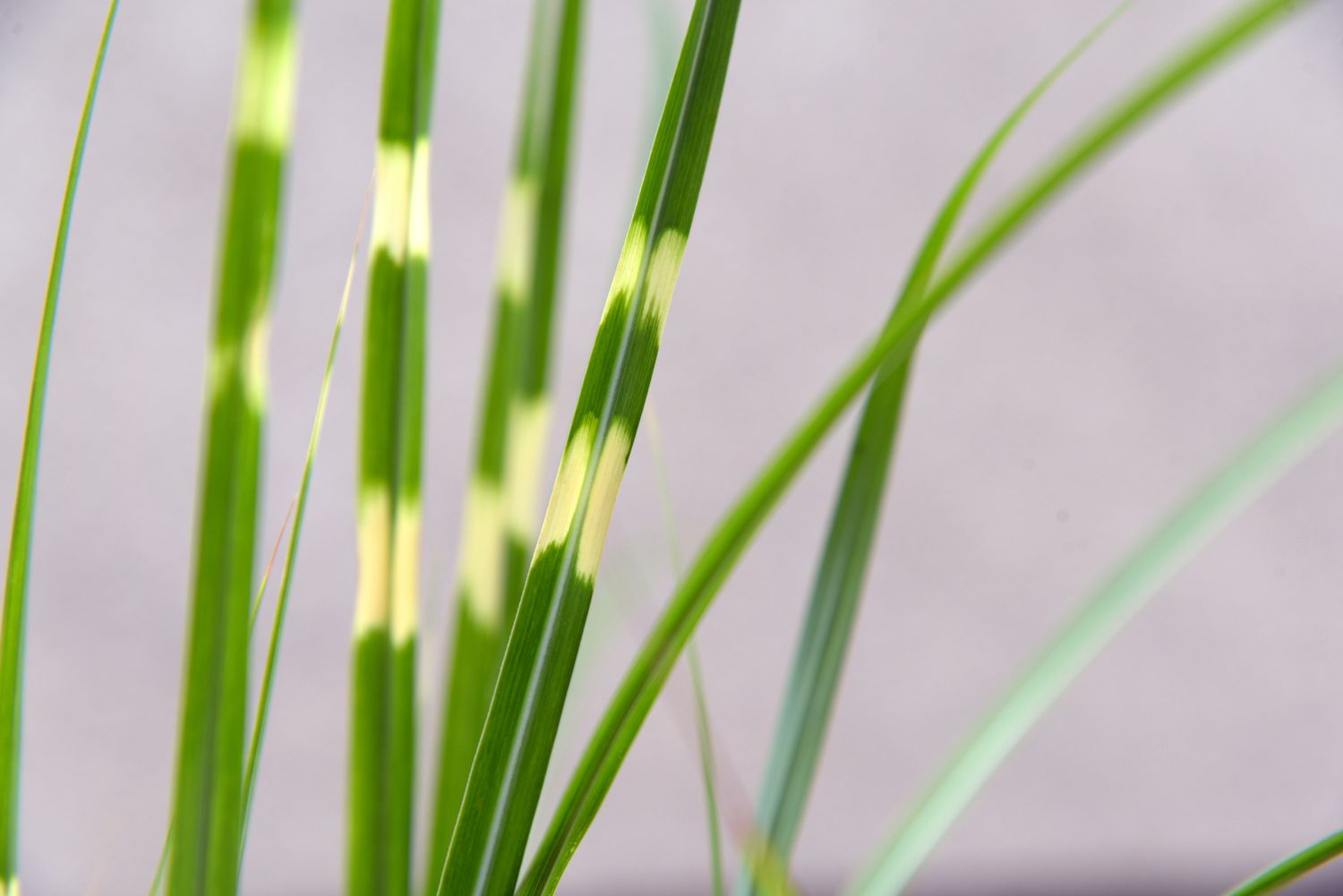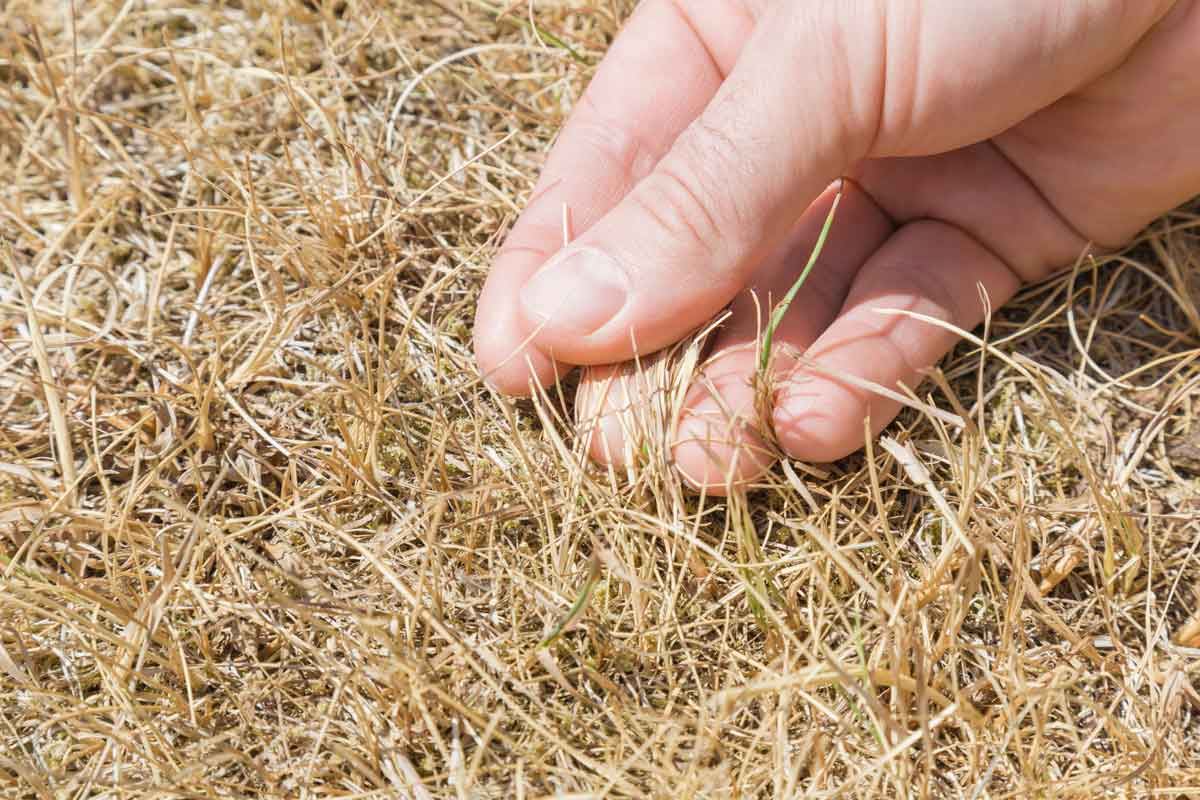Home>Gardening & Outdoor>Landscaping Ideas>When Did Grass First Appear


Landscaping Ideas
When Did Grass First Appear
Modified: February 18, 2024
Discover the history of grass and its significance for landscaping ideas. Learn when grass first appeared and its impact on landscaping practices. Explore the evolution of landscaping with grass.
(Many of the links in this article redirect to a specific reviewed product. Your purchase of these products through affiliate links helps to generate commission for Storables.com, at no extra cost. Learn more)
Introduction
Grass, the lush green carpet that adorns landscapes, has a rich history dating back millions of years. Its presence has significantly influenced the Earth’s ecosystems and the development of various species. In this article, we will embark on a journey through time to explore the evolution of grass and its profound impact on the planet’s biodiversity. From the emergence of early grass species to the formation of expansive grasslands, we will delve into the fascinating story of this ubiquitous plant and its enduring legacy.
Key Takeaways:
- Grass has been around for over 60 million years, shaping landscapes and supporting diverse species with its adaptability and resilience.
- The rise of grasslands, influenced by the coevolution of grasses, grazing herbivores, and fire, has fostered rich biodiversity and sustained human societies for millennia.
The Evolution of Grass
Grasses, belonging to the Poaceae family, have undergone a remarkable evolutionary journey spanning over 60 million years. They are among the most widespread plant species on Earth, demonstrating incredible adaptability to diverse climates and soil conditions. The evolution of grass can be traced back to the late Cretaceous period, a time when these plants began to make their mark on the planet’s landscapes.
One of the defining characteristics of grass is its unique growth habit, with stems that are hollow and jointed, known as culms. These culms enable grasses to grow rapidly and withstand grazing by herbivores, contributing to their resilience in various ecosystems. Furthermore, the development of specialized root systems has allowed grasses to thrive in environments ranging from expansive prairies to arid deserts, showcasing their exceptional versatility.
Over time, grasses have evolved diverse reproductive strategies, including wind pollination and symbiotic relationships with fungi, ensuring their widespread propagation and survival. This adaptability has contributed to the prevalence of grasses across continents, shaping the ecological balance of numerous habitats.
As we continue our exploration, we will uncover the fossil evidence that provides insights into the early stages of grass evolution and the pivotal role these plants played in the emergence of grasslands, profoundly impacting the Earth’s ecosystems.
Fossil Evidence of Early Grass
The study of fossilized remains has provided invaluable clues about the emergence and evolution of grasses on our planet. Fossils dating back to the late Cretaceous period, approximately 70 million years ago, have unveiled the presence of early grass species, shedding light on their ancient origins. These ancient grasses, though distinct from their modern counterparts, played a pivotal role in shaping the Earth’s landscapes and ecosystems.
The discovery of fossilized grass pollen grains in sedimentary rock layers has offered compelling evidence of the early diversification of grasses. These microscopic remnants provide crucial insights into the distribution and abundance of grasses during different geological epochs, enabling scientists to reconstruct the evolutionary timeline of these resilient plants.
Moreover, the identification of fossilized grass phytoliths, microscopic silica structures found in plant tissues, has further deepened our understanding of ancient grass species. These phytoliths, preserved in sediments and soil deposits, have facilitated the identification of grass lineages and their ecological adaptations over millions of years.
Additionally, the examination of fossilized grass leaf impressions has unveiled the morphological diversity of early grass species and their coexistence with prehistoric flora and fauna. These well-preserved imprints have provided valuable data for paleobotanists and evolutionary biologists, enabling them to reconstruct the ancient environments in which these early grasses thrived.
By piecing together the puzzle of fossil evidence, scientists have gained profound insights into the evolutionary trajectory of grasses, from their humble beginnings to their widespread proliferation across the globe. This evidence has not only illuminated the history of grasses but has also underscored their enduring significance in shaping terrestrial ecosystems and supporting diverse forms of life.
Grass first appeared on Earth around 55 million years ago during the Paleocene era. It evolved from early grass-like plants and eventually spread across the planet.
The Rise of Grasslands
The emergence and expansion of grasslands have been closely intertwined with the evolution and proliferation of grass species. Grasslands, characterized by vast open spaces dominated by grasses and other herbaceous plants, have played a pivotal role in shaping the Earth’s ecosystems and supporting a myriad of wildlife.
Over millions of years, the gradual spread of grasses across different continents has contributed to the formation of diverse grassland ecosystems, ranging from the expansive savannas of Africa to the sprawling prairies of North America. The adaptability of grasses to a variety of environmental conditions, including fire, grazing, and drought, has been instrumental in the establishment and sustenance of these unique habitats.
The coevolution of grasses and grazing herbivores has significantly influenced the structure and dynamics of grassland ecosystems. Grazing animals, such as bison, antelope, and zebras, have played a vital role in shaping the composition and distribution of grasses through selective grazing and trampling, thereby contributing to the maintenance of open grassland landscapes.
Furthermore, the interaction between grasses and fire has been a defining factor in the development of fire-adapted grassland ecosystems. Many grass species have evolved mechanisms to withstand and even benefit from periodic fires, leading to the prevalence of fire-maintained grasslands in various regions around the world.
Grasslands also harbor a remarkable diversity of plant and animal species, with grasses serving as the primary producers at the base of the food chain. The rich tapestry of life within grasslands includes a multitude of insects, birds, mammals, and reptiles, each intricately connected to the grassland ecosystem.
Moreover, the cultural and agricultural significance of grasslands cannot be overlooked. Throughout history, grasslands have provided sustenance for human societies, serving as fertile grounds for agriculture and pastoralism. The utilization of grasslands for grazing livestock and cultivating staple crops has shaped human civilizations and livelihoods for millennia.
As we contemplate the rise of grasslands, it becomes evident that these dynamic ecosystems have been molded by the enduring presence and influence of grasses, underscoring their indispensable role in the intricate web of life on our planet.
Conclusion
The story of grass is a testament to the enduring impact of a seemingly humble plant on the Earth’s ecosystems and the intricate tapestry of life. From its ancient origins to the formation of expansive grasslands, grass has shaped landscapes, supported diverse species, and sustained human societies for millennia.
The evolution of grass, spanning over 60 million years, has been marked by remarkable adaptability and resilience. These traits have enabled grasses to thrive in a myriad of environments, from temperate meadows to arid steppes, exerting a profound influence on the ecological balance of these habitats.
Through the study of fossil evidence, scientists have unraveled the early chapters of grass evolution, unveiling the diverse lineages and adaptations that have allowed grasses to become one of the most widespread plant families on Earth. The discovery of fossilized grass pollen grains, phytoliths, and leaf impressions has provided invaluable insights into the ancient history of grasses and their role in shaping terrestrial ecosystems.
The rise of grasslands, with their sprawling expanses and rich biodiversity, stands as a testament to the enduring partnership between grasses and the natural world. The coevolution of grasses, grazing herbivores, and fire has sculpted these dynamic ecosystems, fostering a delicate balance that supports a myriad of plant and animal species.
Moreover, the cultural and agricultural significance of grasslands cannot be overstated. These fertile landscapes have sustained human societies, providing sustenance for agricultural practices, grazing livestock, and fostering a deep connection between people and the land.
In conclusion, the legacy of grass is woven into the fabric of our planet’s history, leaving an indelible mark on the landscapes, ecosystems, and human societies it has touched. As we continue to explore and appreciate the profound influence of grass, we gain a deeper understanding of the intricate relationships that sustain life on Earth.
Frequently Asked Questions about When Did Grass First Appear
Was this page helpful?
At Storables.com, we guarantee accurate and reliable information. Our content, validated by Expert Board Contributors, is crafted following stringent Editorial Policies. We're committed to providing you with well-researched, expert-backed insights for all your informational needs.
















0 thoughts on “When Did Grass First Appear”